

Western Wall Tunnel
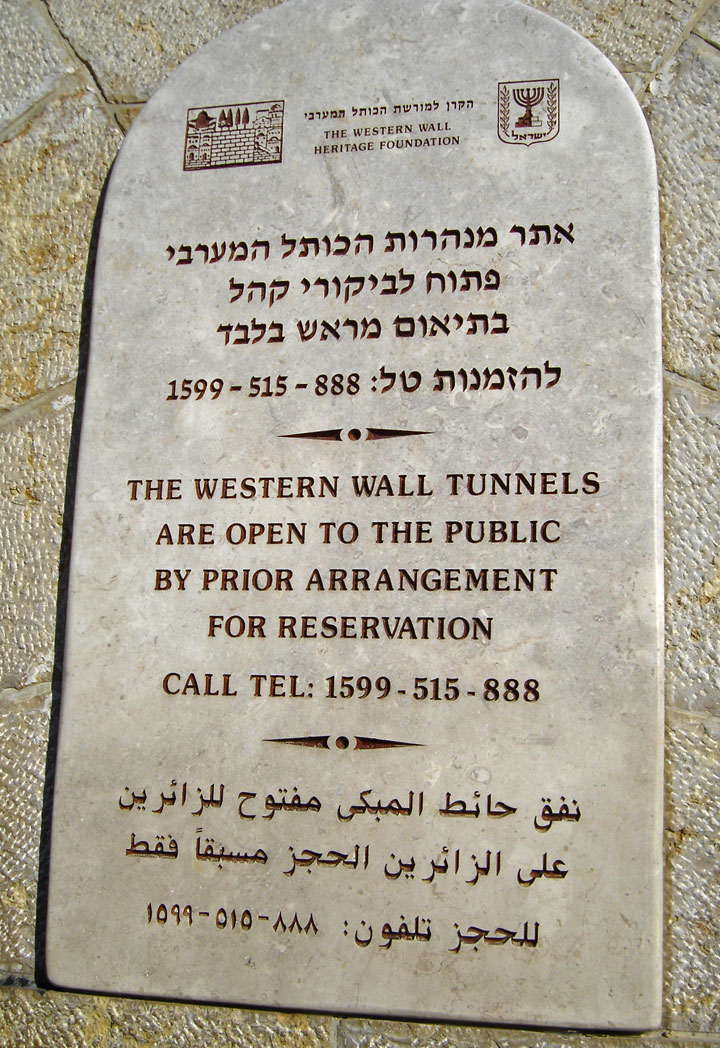
The Western Wall Tunnel (Hebrew: מנהרת הכותל, translit.: Minheret Hakotel) is an underground tunnel exposing the Western Wall in its full length. The tunnel is adjacent to the Western Wall and is located under buildings of the Old City of Jerusalem, Israel. While the open-air portion of the Western Wall is approximately 60 m long, the majority of its original length is hidden underground. The tunnel allows access to an additional 485 meters of the wall.
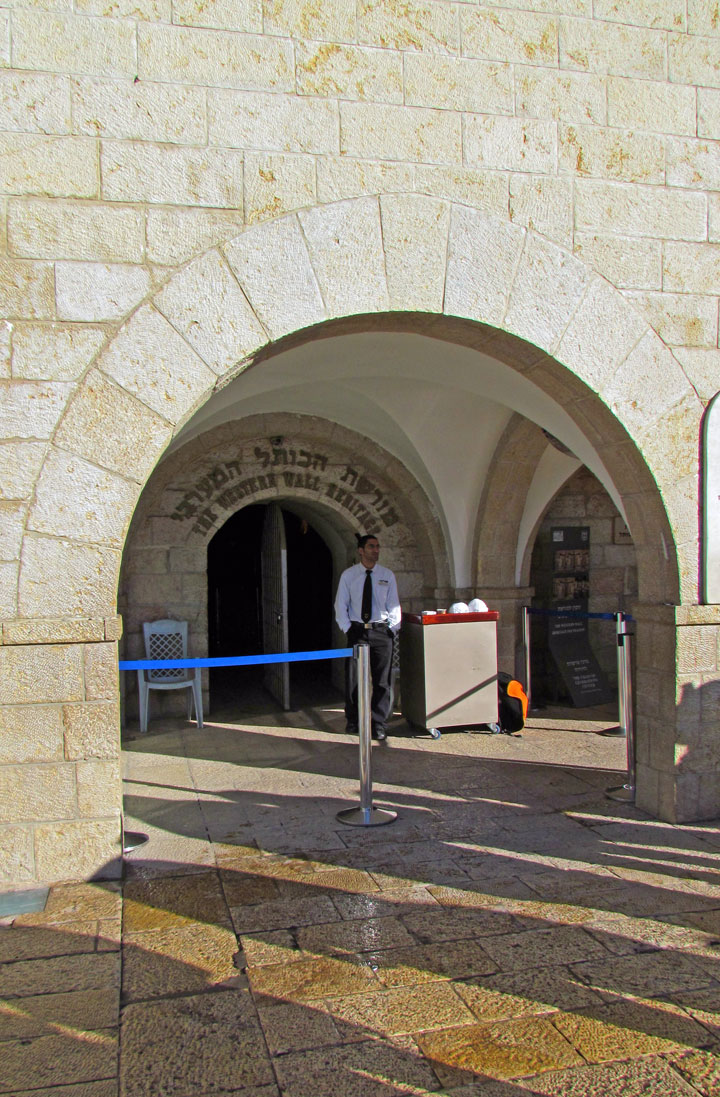
entrance
In 19 BCE, King Herod undertook a project to double the area of the Temple Mount in Jerusalem by incorporating part of the hill on the Northwest. In order to do so, four retaining walls were constructed, and the Temple Mount was expanded on top of them. These retaining walls remained standing, along with the platform itself, after the Temple was destroyed by the Romans in 70 CE; but since then much of the area next to them became covered and built upon. Part of the Western Wall remained exposed after the destruction of the Temple; since it was the closest area to the Temple’s Holy of Holies that remained accessible, it became a place of Jewish prayer for millennia.
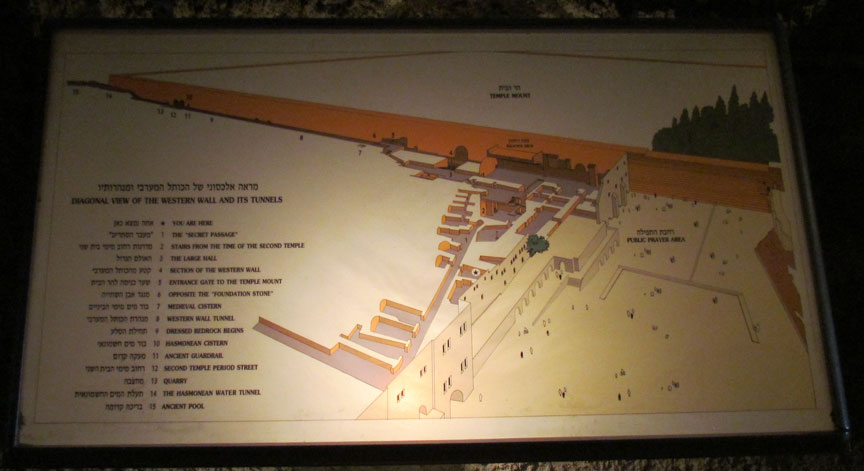
Western Wall tunnels
Concrete supports are used to reinforce the ancient streets above in Jerusalem's Muslim Quarter. At the end of this tunnel is the northern exit, which alleviated the need for turning around at the far end and having two-way traffic flow in the narrow corridor.

arch
British researchers started excavating the Western Wall in the mid 19th century. Charles Wilson in 1864 followed by Charles Warren in 1867-70. Wilson discovered an arch “Wilson’s Arch” which was 12.8 meters wide and is above present-day ground level. It is believed that the arch supported a bridge which connected the Temple Mount to the city during the Second Temple Period. Warren dug shafts through Wilson’s Arch which are still visible today.
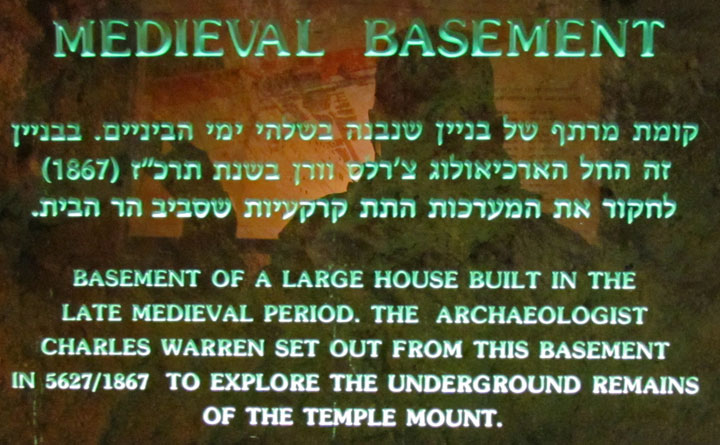
After the Six Day War, the Ministry of Religious Affairs of Israel began the
excavations aimed at exposing the continuation of the Western Wall. The
excavations lasted almost twenty years and revealed many previously unknown
facts about the history and geography of the Temple Mount. The excavations were
difficult to conduct, as the tunnels ran below residential neighborhoods
constructed on top of ancient structures from the Second Temple Period. The
excavations were conducted with the supervision of scientific and rabbinc
experts. This was to ensure both the stability of the structures above and to
prevent damaging the historic artifacts. In 1988 the Western Wall Heritage
Foundation was formed, it took over the excavation, maintenance and renovations
of the Western Wall and Western Wall Plaza.
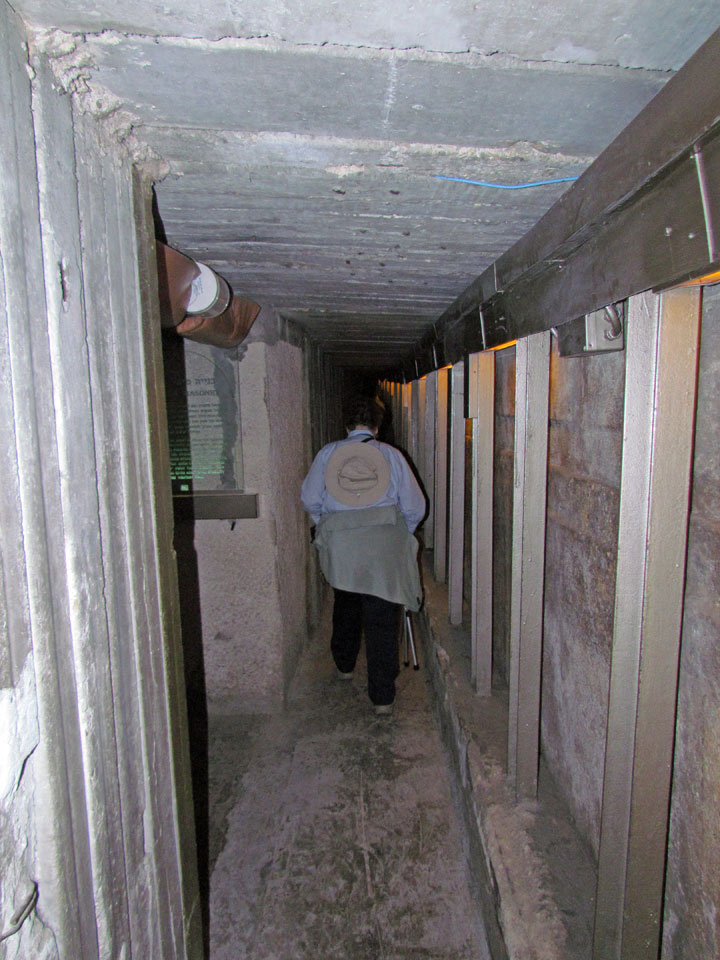
The tunnel exposes a total length of 485 m of the wall, revealing the methods of
construction and the various activities in the vicinity of the Temple Mount. The
excavations included many archaeological finds along the way, including
discoveries from the Herodian period (streets, monumental masonry), sections of
a reconstruction of the Western Wall dating to the Umayyad period, and various
structures dating to the Ayyubid, Mamluke and Hasmonean periods constructed to
support buildings in the vicinity of the Temple Mount.
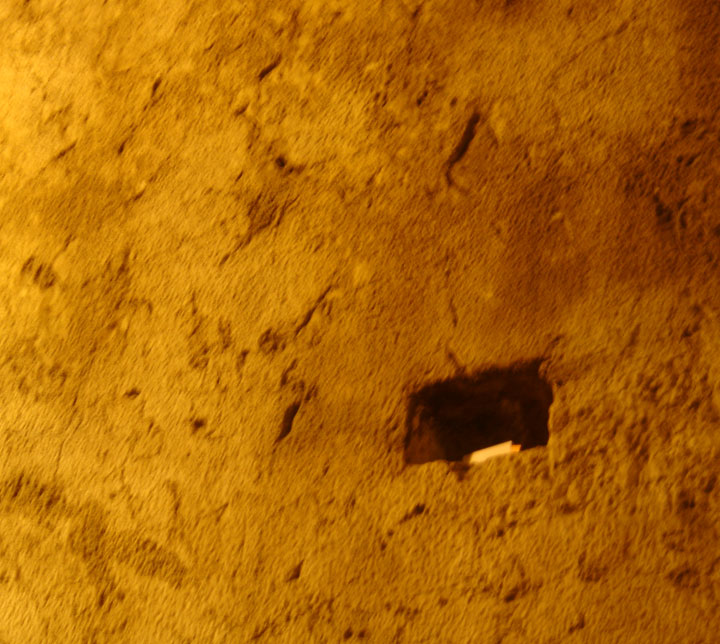
temple stone
"Warren's Gate" lies about 150 feet into the tunnel. This sealed-off entrance has been turned into a small synagogue called "The Cave", by Rabbi Yehuda Getz, since it is the closest point a Jew can get to the Holy of Holies, assuming it was located at the traditional site under the Dome of the Rock.
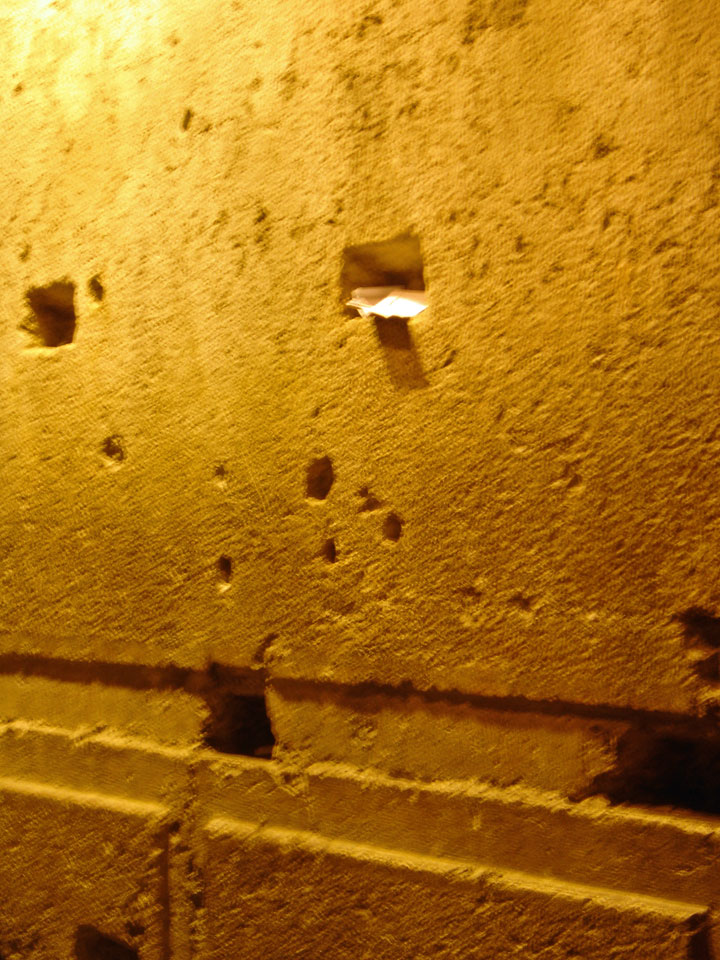
At the northern portion of the Western Wall, remains of a water channel, which
originally supplied water to the Temple Mount, were found. The exact source of
the channel is unknown, though it passes through an underground pool known as
the "Strouthion Pool". The water channel was dated to the Hasmonean period and
was accordingly dubbed the "Hasmonean Channel".

large stone in background
The biggest stone in the Western Wall often called the Western Stone is also revealed within the tunnel and ranks as one of the heaviest objects ever lifted by human beings without powered machinery. The stone has a length of 13.6 meters and an estimated width of between 3.5 and 4.5 meters; estimates place its weight at 570 short tons.
Adjacent to the tunnel lies a museum called "The Chain of Generations Center,"
designed by Eliav Nahlieli. The impressive site, which incorporates ancient and
modern Jewish history, includes an elaborate audiovisual show, and nine
magnificent glass sculptures created by glass artist Jeremy Langford.
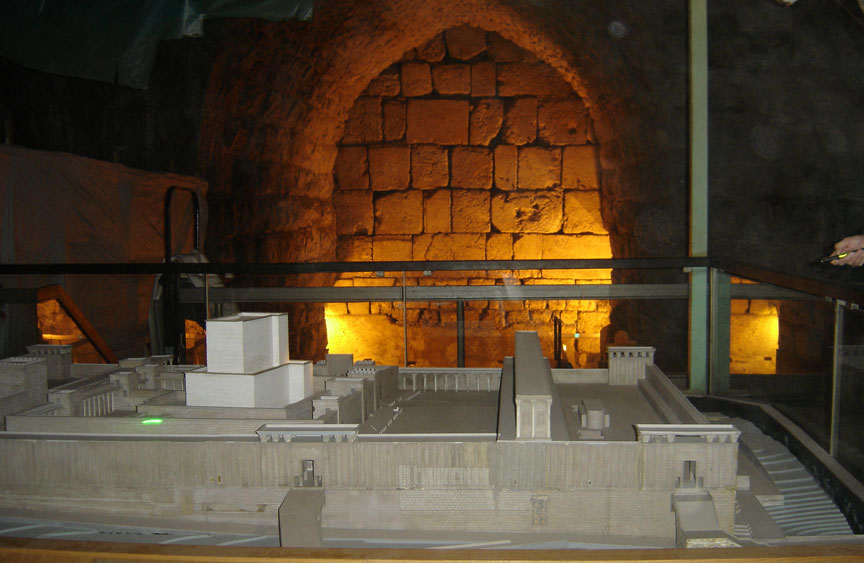
temple model
In 2007 the Israel Antiquities Authority uncovered an ancient Roman street, thought to be from the second to fourth centuries. It was a side street which likely connected two major roads, and led up to the Temple Mount. The discovery of the road gave further evidence that Romans continued to use the Temple Mount after the destruction of the temple in 70 CE.
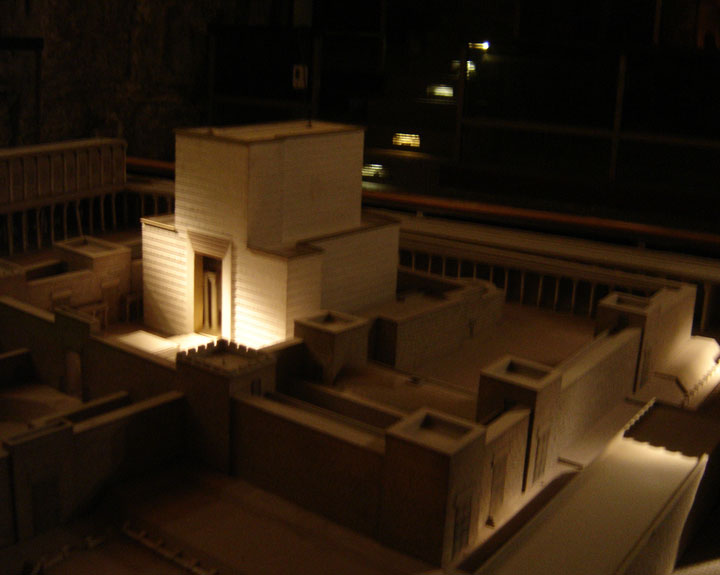
The Struthion Pool is a large cuboid cistern, which gathered the rainwater from
guttering on the Forum buildings. Prior to Hadrian, this cistern had been an
open-air pool, but Hadrian added arch vaulting to enable the pavement to be
placed over it. The existence of the pool in the first century is attested by
Josephus, who reports that it was called Struthius (literally meaning sparrow).
This Struthion Pool was originally built as part of an open-air water conduit by
the Hasmoneans, which has since been enclosed; the source of the water for this
conduit is currently unidentified.
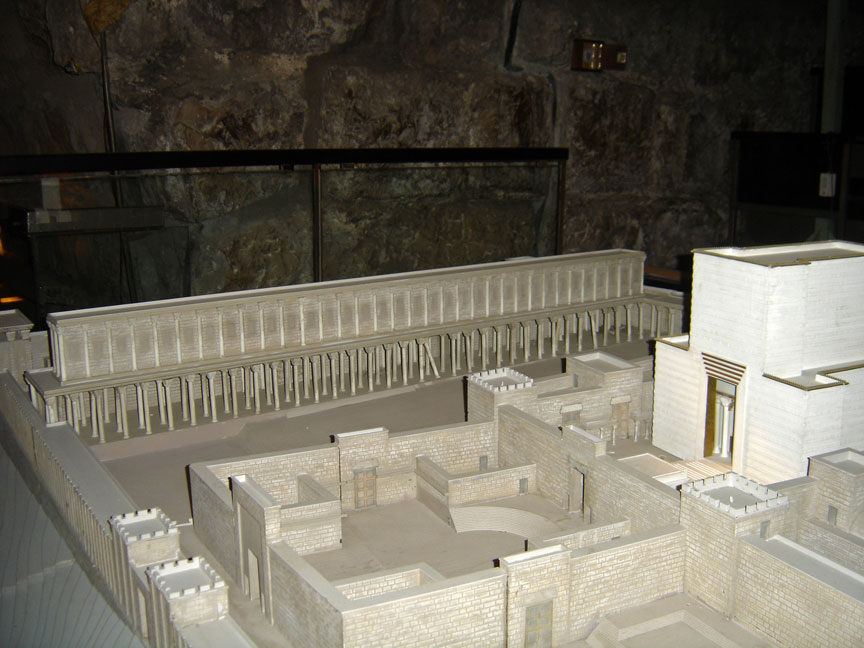
As a result of 1971 extensions to the original Western Wall Tunnel, the
Hasmonean water system became linked to the end of the Western Wall Tunnel;
although they run under Arab housing, and later opened as a tourist attraction.
The attraction has a linear route, starting at the Western Wall Plaza, passing
through the modern tunnels, then the ancient water system, and ending at the
Strouthion Pool; as the Sisters of Zion were not willing to allow tourists to
exit into the Convent of the Sisters of Zion via the Strouthion Pool, tourists
had to return through the narrow tunnels to their starting point, creating
logistical issues.

location of the Dome of the Rock
Originally, tourists in the tunnel had to retrace their steps back to the entrance. A connection to the Hasmonean water system was made, but this still required tourists to eventually make a U-turn once they had reached the Strouthion Pool.

shape of the rock
Digging an alternative exit from the tunnel was proposed, but initially rejected on the grounds that any exit would be seen as an attempt by the Jewish authorities to stake a claim to ownership of the nearby land - part of the Muslim Quarter of the city; in 1996, however, Benjamin Netanyahu authorized the creation of an exit leading to the Via Dolorosa, underneath the Ummariya madrasah. Over the subsequent few weeks, 80 people had been killed as a result of riots against the creation of the exit. A modern wall divides the Struthion pool into two parts, preventing access between them; one side is visible from the western wall tunnels, the other is area accessible from the Convent of the Sisters of Zion. Since then, it has been possible for large numbers of tourists to enter the tunnel's southern entrance near the Western Wall, walk the tunnel's length with a tour guide, and exit from the northern end.
Text from Wikipedia
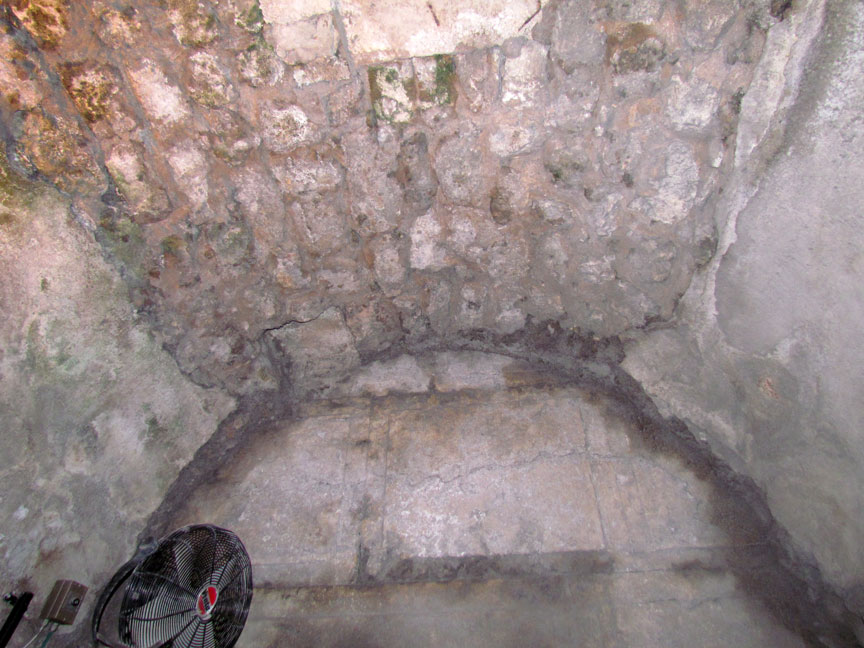
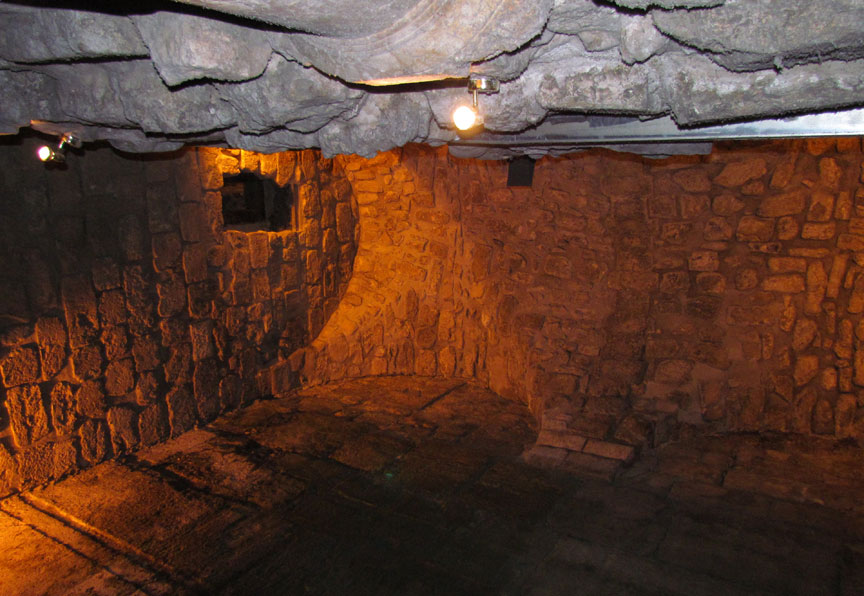
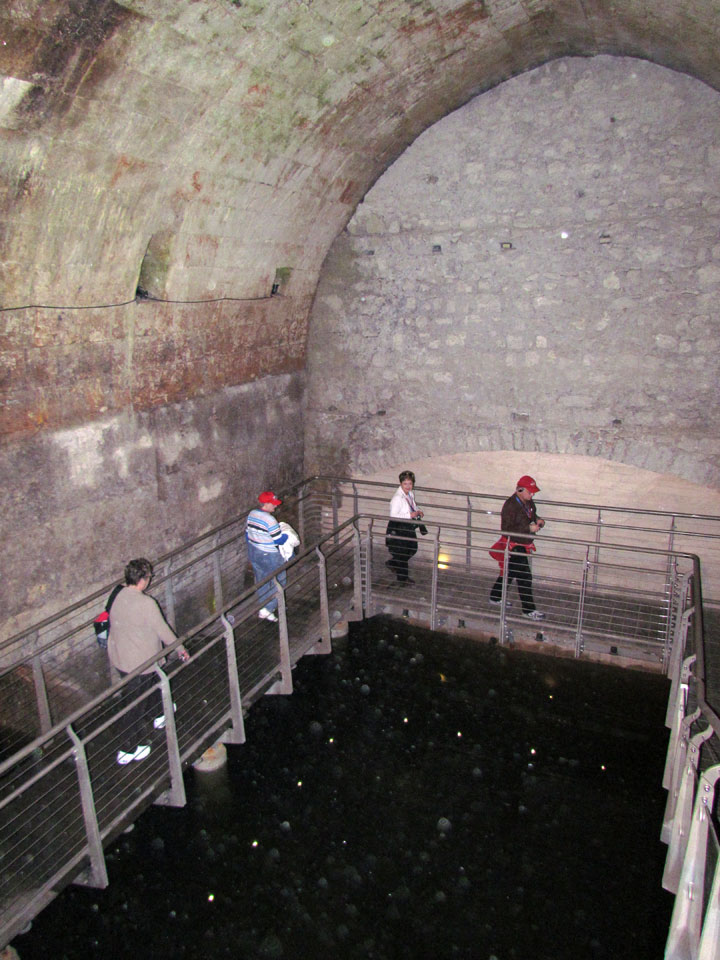
spring
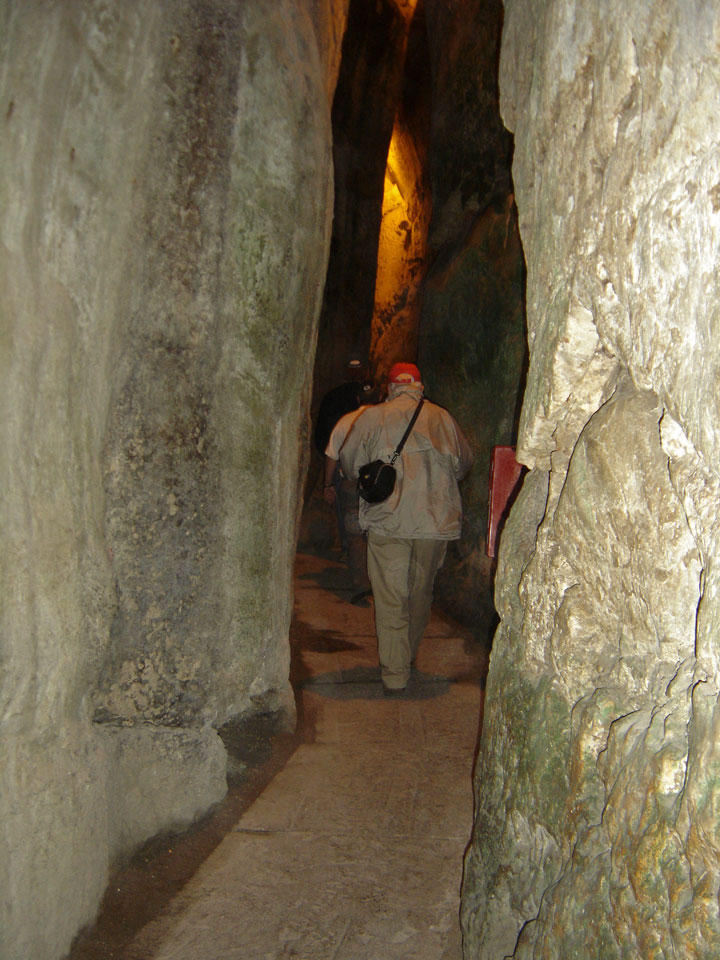
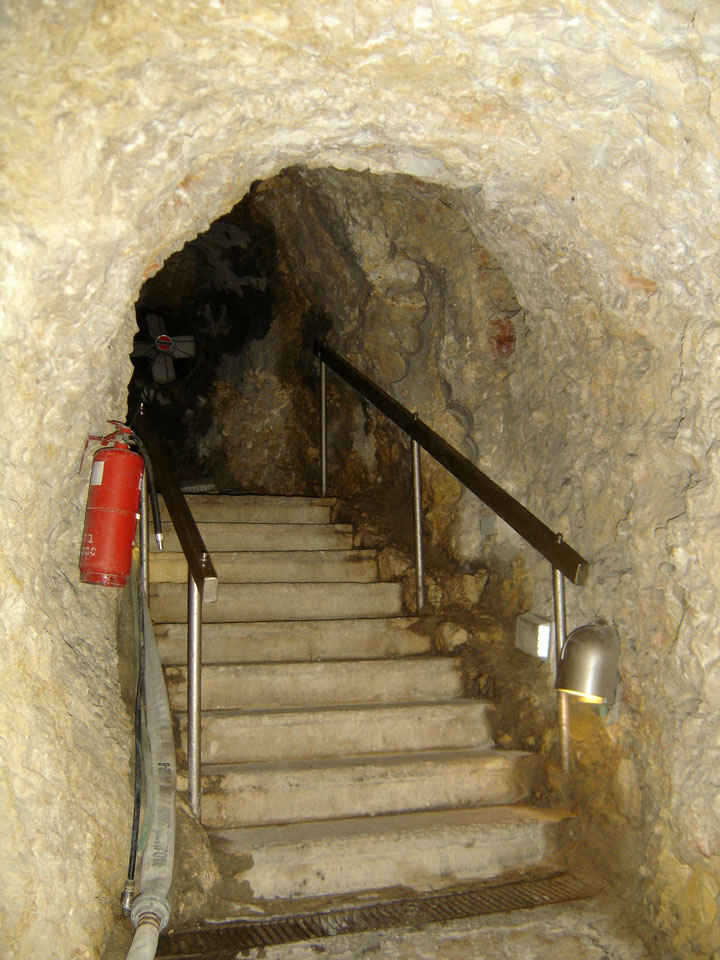

Western Wall tunnels